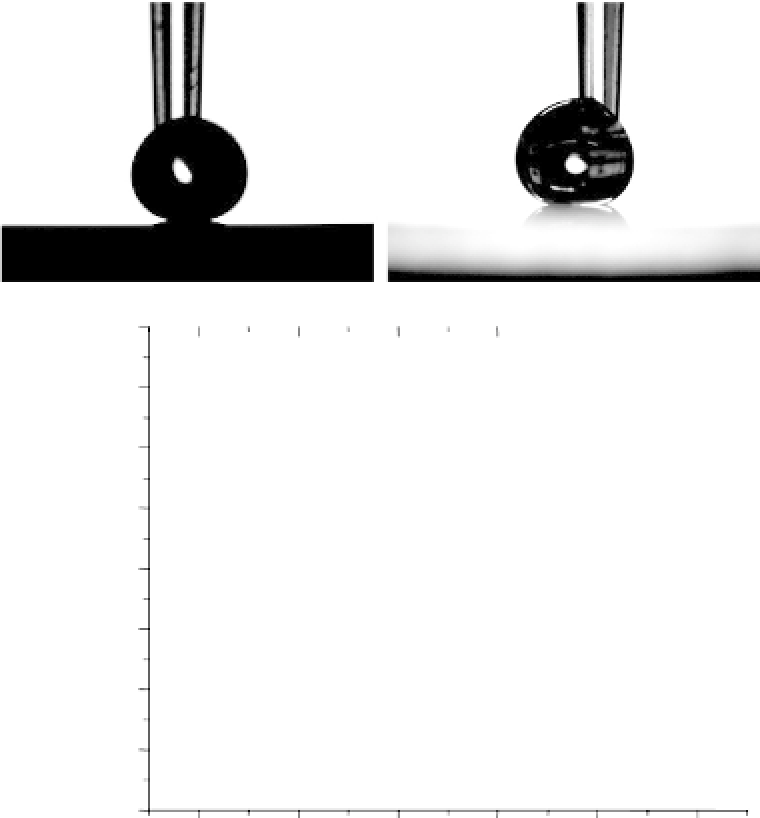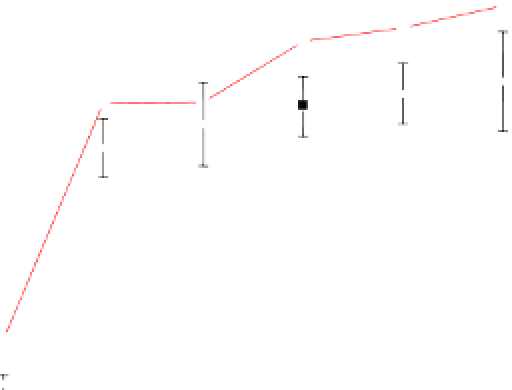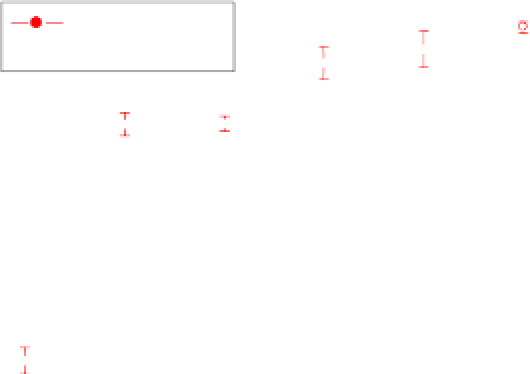Biomedical Engineering Reference
In-Depth Information
12.5 NANOSTRUCTURED
SUP
ERHYDROPHOBIC COATI
NGS
nanopillars have been observed on the wings of
cicada to render superhydrophobic surfaces for
self-cleaning functionality
[146]
. The hydropho-
bicity of the templated silicon and glass nano-
pillars can be improved by functionalizing them
with fluorosilane through the well-established
silane coupling reaction
[147]
.
Figures 12.21
a and
12.21
b show water-drop
profiles on fluorosilane-modified silicon and
glass pillar arrays, respectively. Both coatings
Besides the broadband antireflection proper-
ties described in Sections
12.3
and
12.4
, the tem-
plated nanopillar arrays with high aspect ratio
can also significantly enhance the hydrophobic-
ity of the substrate surface due to the high frac-
tion of air trapped in the trough area between
pillars
[144-146]
. Indeed, periodic arrays of
(a)
(b)
(c)
180
Silicon pillars
Glass pillars
170
160
150
140
130
120
110
100
10
20
30
40
50
60
Etch Time (min)
FIGURE 12.21
Superhydrophobic coatings achieved on both templated silicon and sol-gel glass nanopillar arrays. (a)
Water-drop profile on a fluorosilane-modified silicon pillar array. (b) Water-drop profile on a fluorosilane-modified glass
pillar array templated from the sample in (a). (c) Apparent water contact angle of templated silicon and glass pillar arrays
etched at different reactive ion etching durations. Adapted from Ref.
105
.




















